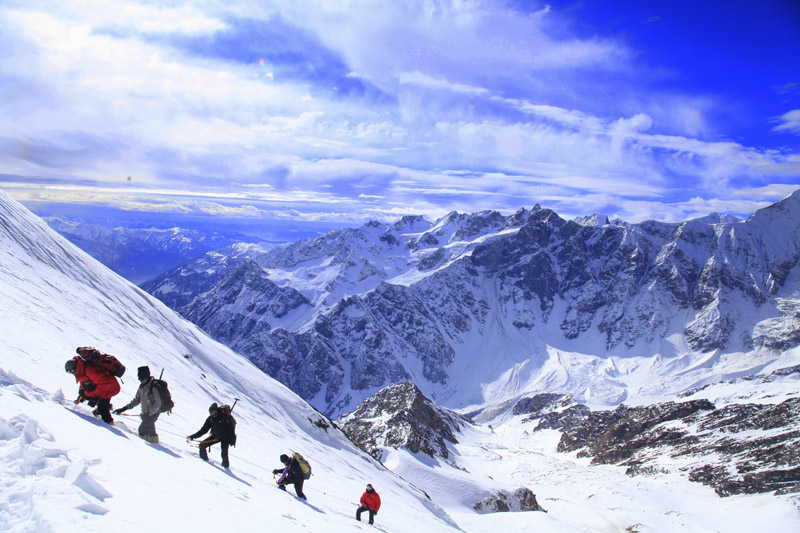Plunging costs fuel safety fears on the world’s highest peak
Kathmandu, April 29
After 17 years of helping climbers reach the roof of the world, Argentinian Damian Benegas won’t be returning to Everest this year, frozen out of the business by cheaper and some say dangerous operators.
“It’s impossible to convince clients to pay us $65,000 for an expedition when there are guys offering trips for $28,000 or less,” the respected guide told AFP from California.
As mountaineers ascend Everest this month during the spring climbing season, fewer Western companies will be leading the expeditions, with Nepal’s sherpas increasingly running the lucrative business.
Western veterans accuse some of the new operators of endangering lives by recruiting untrained sherpas and by accepting clients with little mountaineering experience.
“The new lot, they hire these young boys who have never been on a mountain and their first trip is carrying loads to the South Col (around 7,900 metres),” warned Russell Brice, owner of top expedition company Himex. “How is that fair? Who is looking after them?” the New Zealander told AFP.
Western operators offered mostly foreign climbers a chance to fullfil their dream of scaling the 8,848-metre high peak for $45,000 to $79,000.
As the industry grew, sherpas, an ethnic group thought to be of Tibetan origin and known for their climbing skills, became indispensable as guides and porters.
But over the last five years, local climbing companies, many run by former guides and porters, have shaken up Nepal’s mountaineering market, offering cheaper, no-frills expeditions.
Leading Western companies secured only 119 climbing permits this season -- which is resuming after a deadly avalanche hit base camp last year and which usually runs until end-May -- less than half the total number allocated.
Nepali firms don’t hire foreign guides and therefore avoid paying the $11,000 government fee for climbing permits, a cost that has traditionally been passed onto clients.
Many have also scaled back on luxuries like WiFi and expensive batteries to power clients’ smartphones and laptops.
But according to some, operators are also lowering costs through using cheap labour -- by emptying remote Himalayan villages of young men who see a job on Everest as their way out of poverty.
Nepal’s tourism department chief Sudarshan Prasad Dhakal said the government was not aware of such concerns, while some locals say the Westerners have sour grapes after years of earning large sums on Everest.
Mingma Sherpa is one guide who uses inexperienced villagers on his expeditions to Everest, taking on up to 25 fresh faces every season.
Sherpa, owner of local company, Seven Summit Treks, rejects the safety claims, saying his youngsters start at the bottom and meticulously learn from their peers, rather than undertaking formal training courses.
“I am offering these young men a chance to learn... there is no safety issue because they are not going to guide clients, they are carrying loads,” Sherpa said.
“They will learn on the job from other sherpas like I did... all this technical training about safety and danger is of no use to us,” he told AFP.
But Dawa Steven Sherpa, managing director of another local firm, Asian Trekking, among the oldest operators in the Himalayas, said he is increasingly worried.
“The combination of untrained sherpas and inexperienced climbers is a lethal cocktail but luckily there are better-equipped companies to rally around in case of accidents,” he told AFP.
For Benegas, who has led many rescue efforts on Everest over the years, the situation is grim.
“This is their country, their mountain -- they have a right to do what they want but we need to be honest about the cost,” he said.






